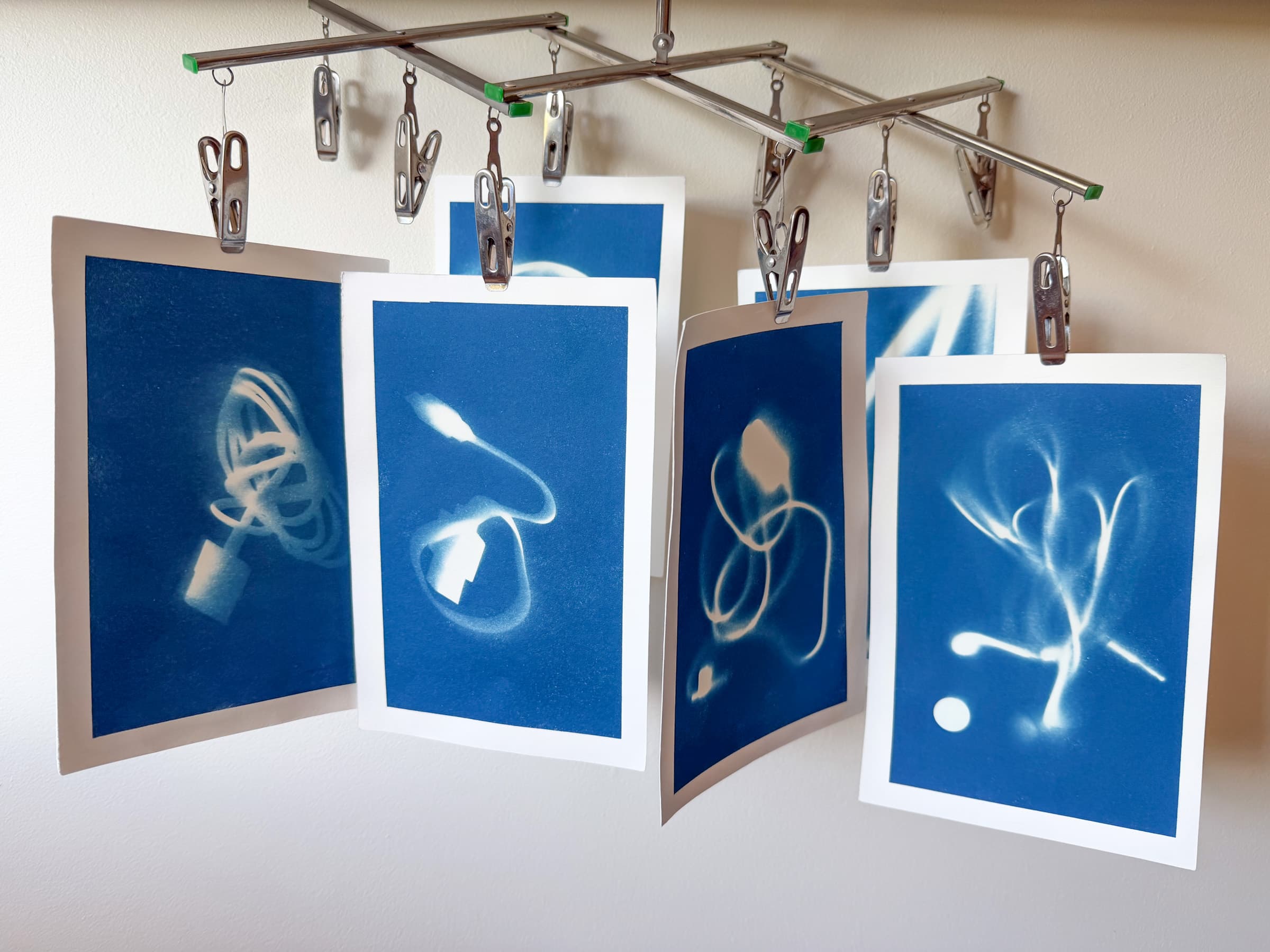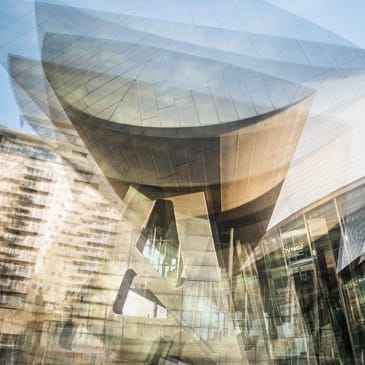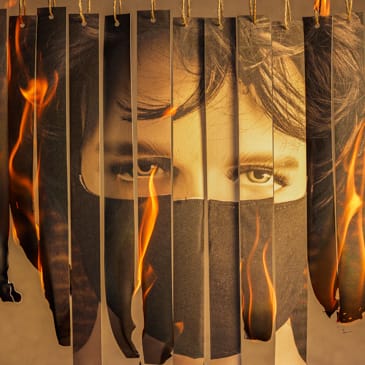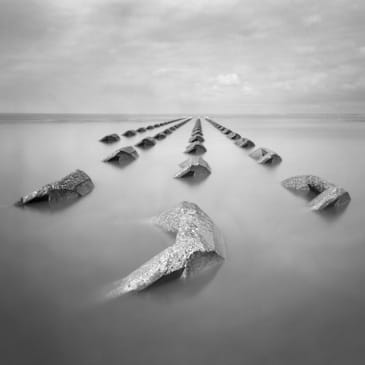Fossils of the Anthropocene
I’ve recently been exploring alternative photography processes with the artist Elisabeth Woodger. I was especially intrigued by the idea of using materiality (the physical qualities of the materials themselves) to create work that's different from what AI imaging can do. AI can copy the look of any picture, but it can’t recreate the feeling of a physical object made by a human.
My goal was to see which image manipulations could make photographs aesthetically pleasing while at the same time being meaningful (rather than just being different for the sake of it). During my time working with Elizabeth, I tried everything from cutting and burning prints to weaving plastic into them. Most attempts failed: some were aesthetically pleasing but lacked a meaningful narrative. Others had a conceptual message but, frankly, looked like something my grandchild might bring back from nursery. Eventually, these failures helped me iterate towards an idea I’m ready to share.
An accidental discovery
The idea came about almost by chance. I had a small sheet of salted paper left over from a pin hole experiment. Rather than discard it, I wondered if it would work as a photogram. All I had nearby on my desk was an iPhone charger cable, so I put it on top of the paper and left it for a couple of days. When I removed the cable, I really liked the light and shadow that the cable had left behind. There was something incongruous about seeing a boring piece of technology transformed into a beautiful, organic shape.
Lumen print
The left-hand image shows the photogram in progress and the right-hand image shows the end result. Salted paper print on Canaletto paper, many hours of exposure in the shade. Photographed with an iPhone.
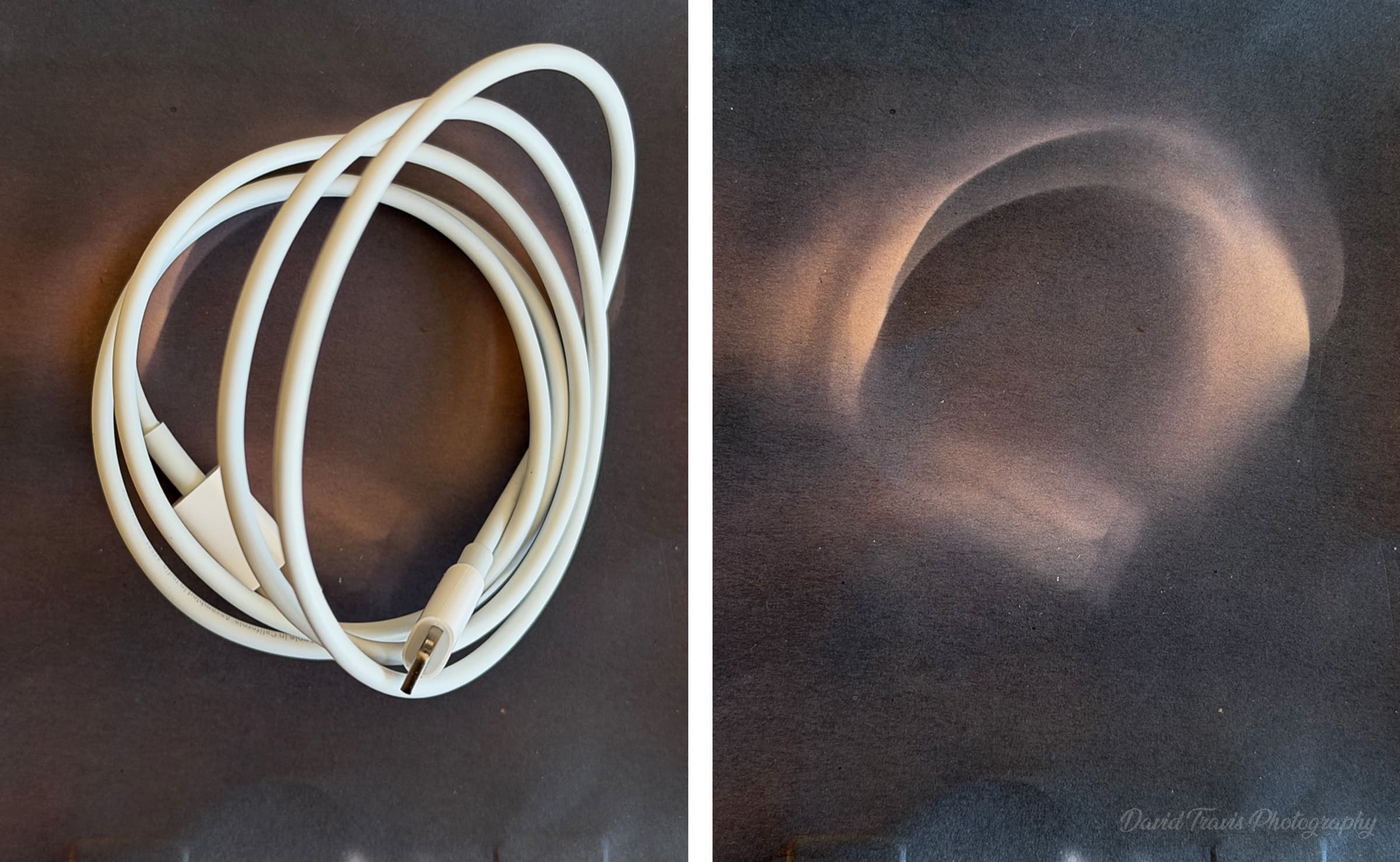
Why cables?
The cable I’d used in my first experiment was one that the European Union forced Apple to introduce as part of a drive to reduce electronic waste. (The EU passed a law in 2022 requiring all new electronic devices to use the same type of charging cable).
Broken ear buds
Cyanotype on Hahnemühle Platinum Rag. Sun-exposed photogram, 8 minute exposure. Scanned with EPSON Perfection V550.
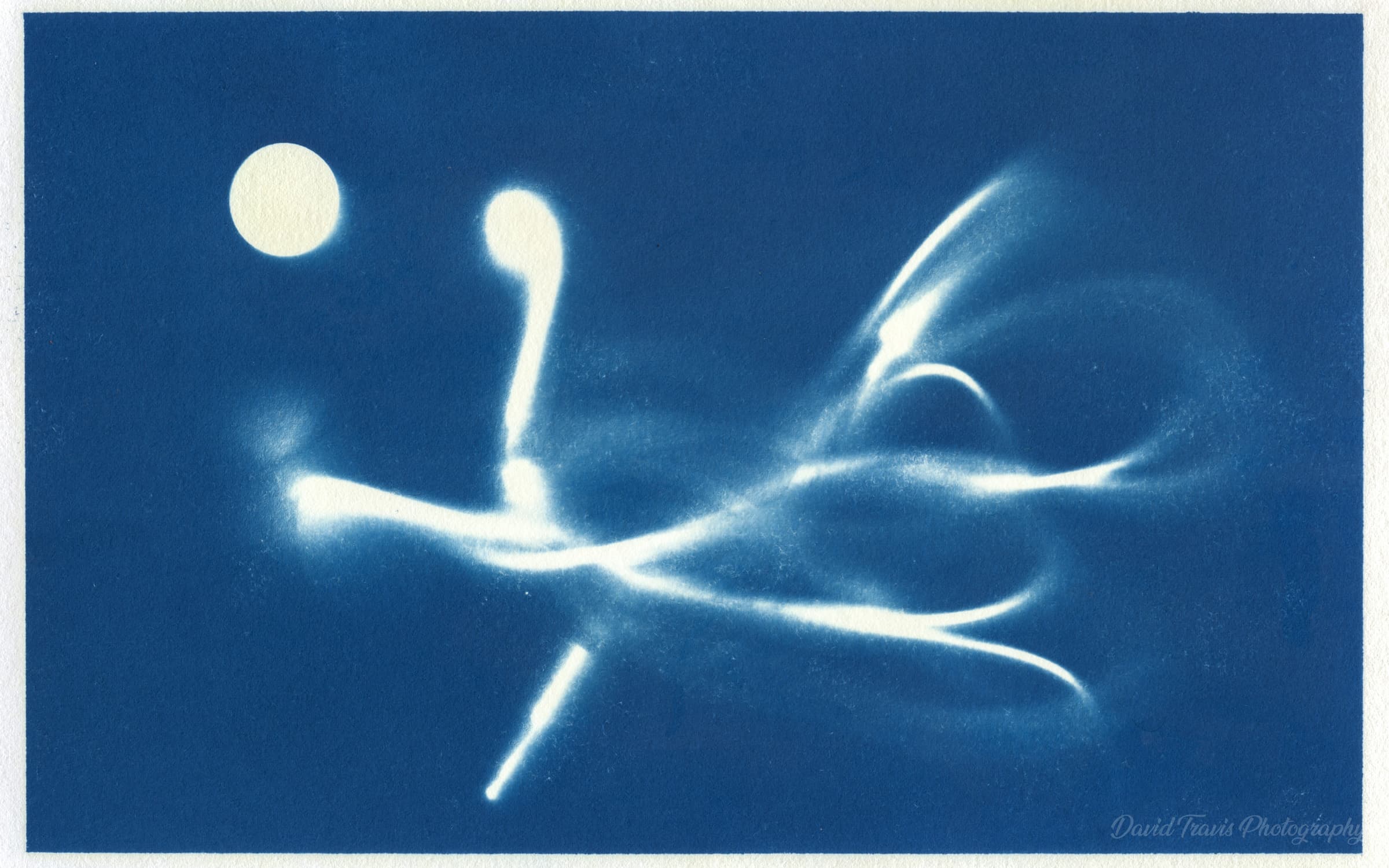
Thinking more about this and tying it into a project that addresses environmental issues, I came up with the idea of ‘Fossils of the Anthropocene’: a series of cyanotype photograms made from obsolete cables.
Scanner cable
Cyanotype on Hahnemühle Platinum Rag. Sun-exposed photogram, 8 minute exposure. Scanned with EPSON Perfection V550.
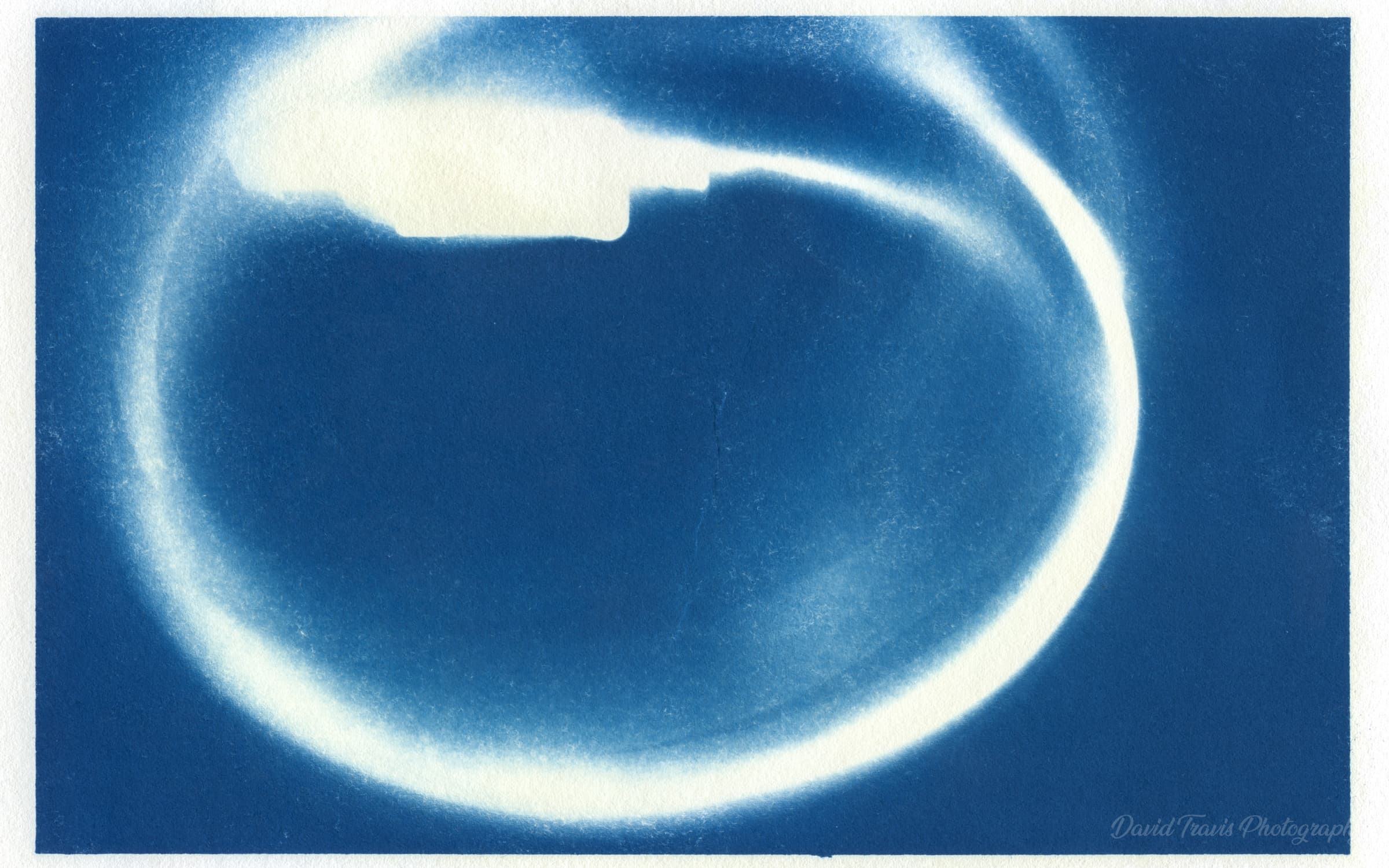
Like most people, I have a drawer (actually a box!) full of old cables: chargers, leads and adaptors that no longer fit anything I own. The devices are gone, but the cables hang around like cobwebs in an attic.
Remote control for first generation iPod
Cyanotype on Hahnemühle Platinum Rag. Sun-exposed photogram, 6 minute exposure. Scanned with EPSON Perfection V550.
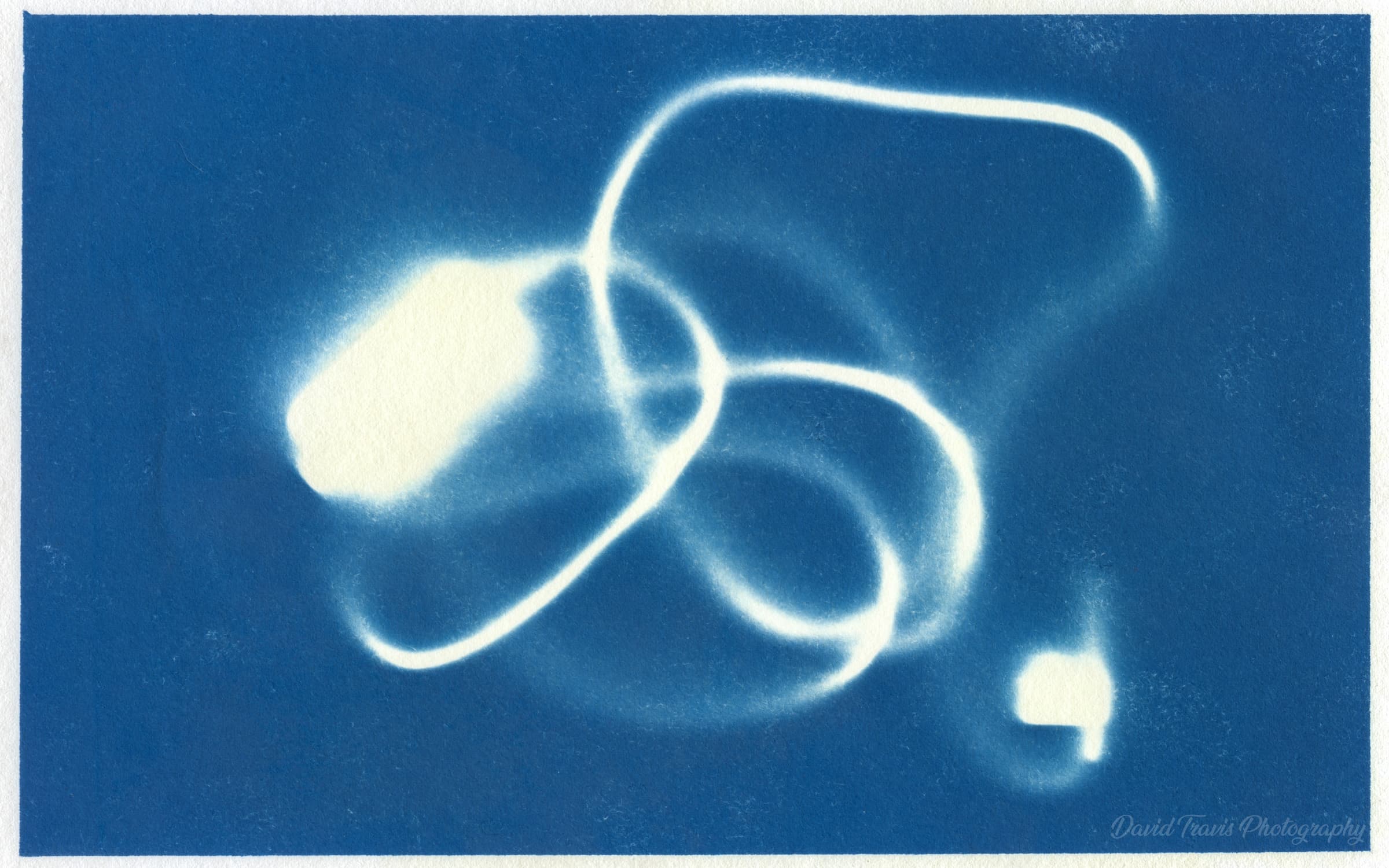
These cables may have a short shelf life but their plastic and metal components will end up in the ground as part of the fossil record. Future layers of rock will carry the imprint of my technology choices.
Portable loudspeaker charging cable
Cyanotype on Hahnemühle Platinum Rag. Sun-exposed photogram, 12 minute exposure. Scanned with EPSON Perfection V550.
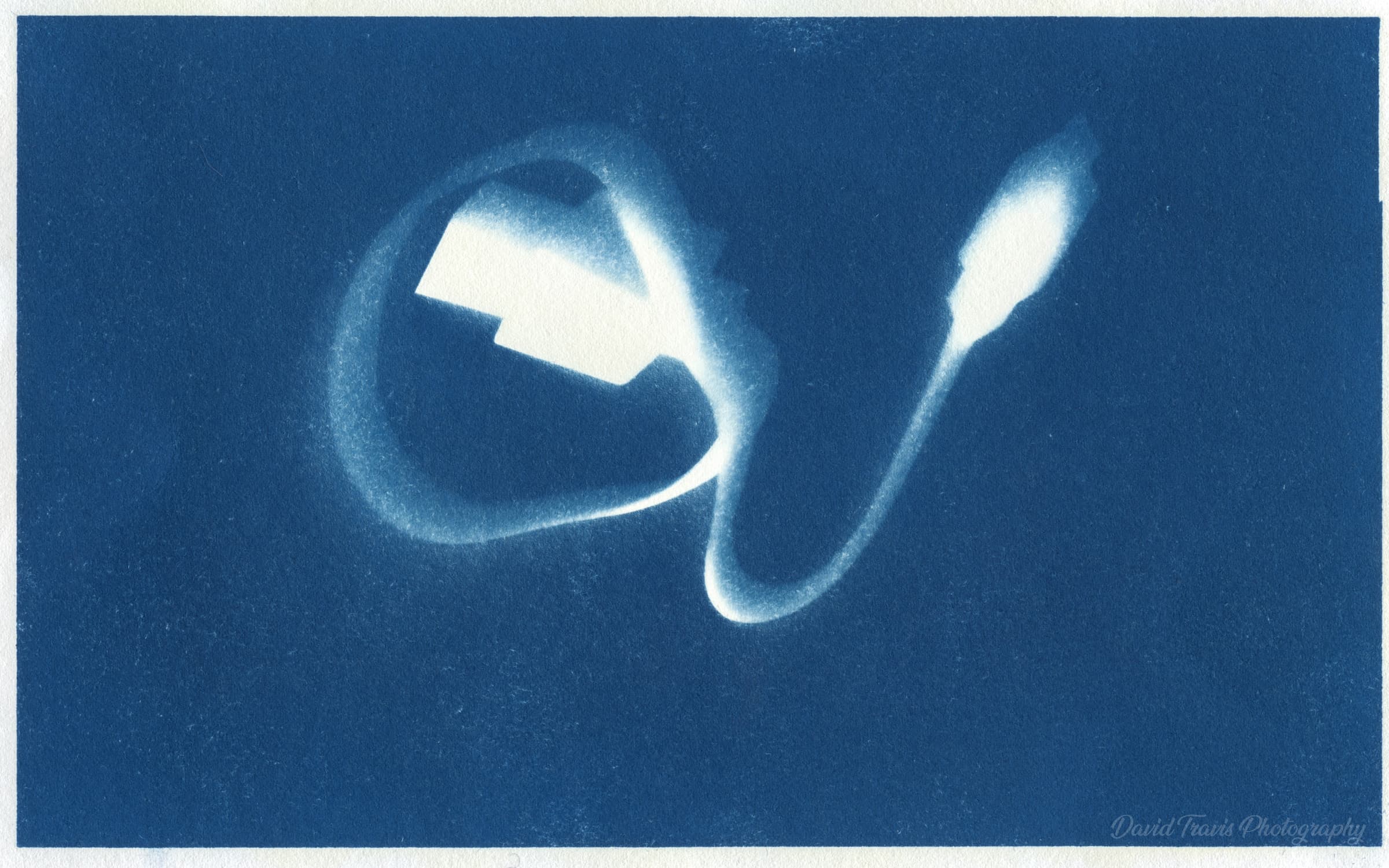
Cyanotype is an early photographic process that has been left behind by modern photography in the same way these cables have been left behind by new devices.
Monitor cable
Cyanotype on Hahnemühle Platinum Rag. Sun-exposed photogram, 6 minute exposure. Scanned with EPSON Perfection V550.
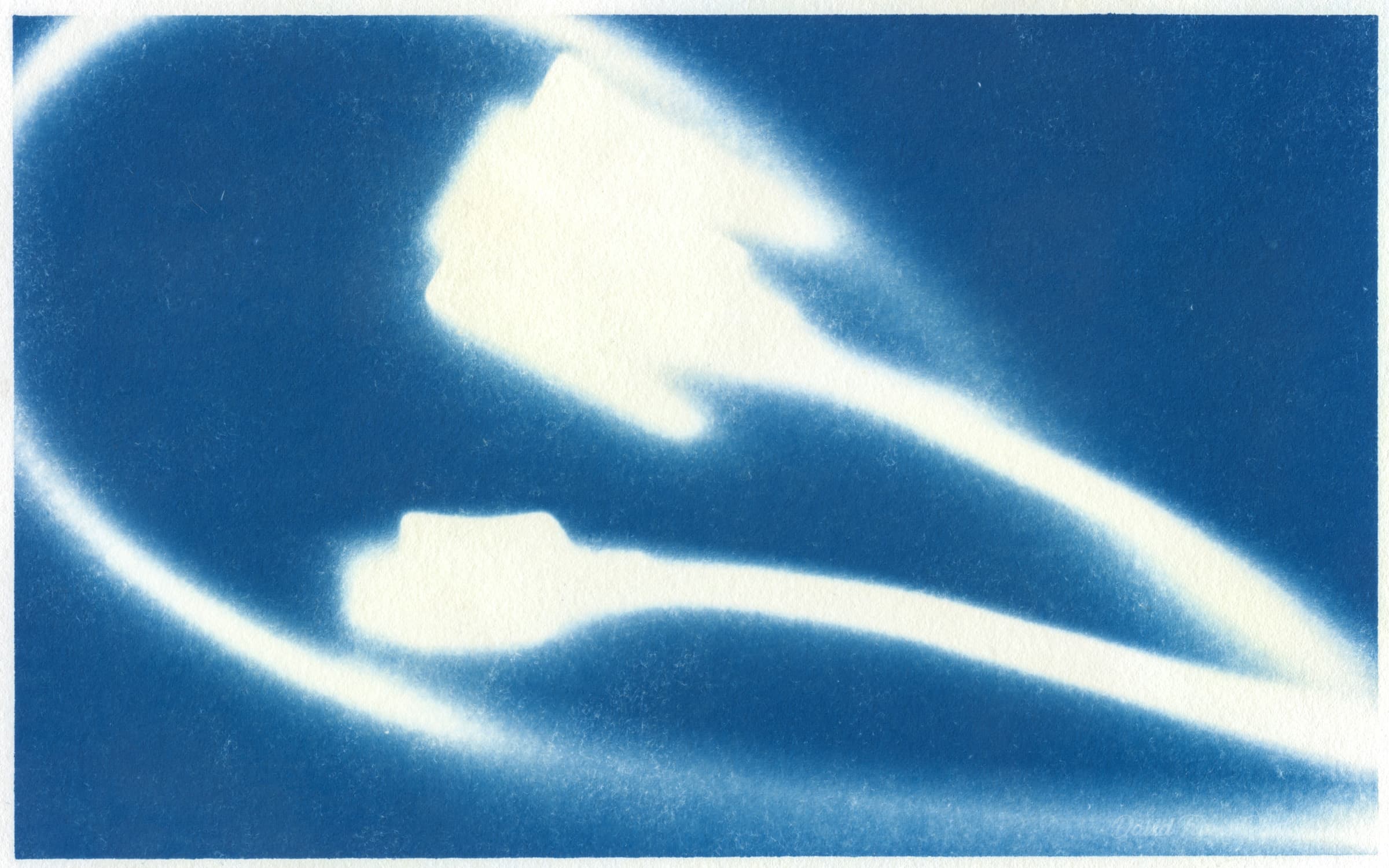
The cyanotypes show the cables and connectors as ghostly white shapes. Some look like undersea creatures, as if they have evolved into a strange new life form.
iPhone 14 charging cable
Cyanotype on Hahnemühle Platinum Rag. Sun-exposed photogram, 12 minute exposure. Scanned with EPSON Perfection V550.
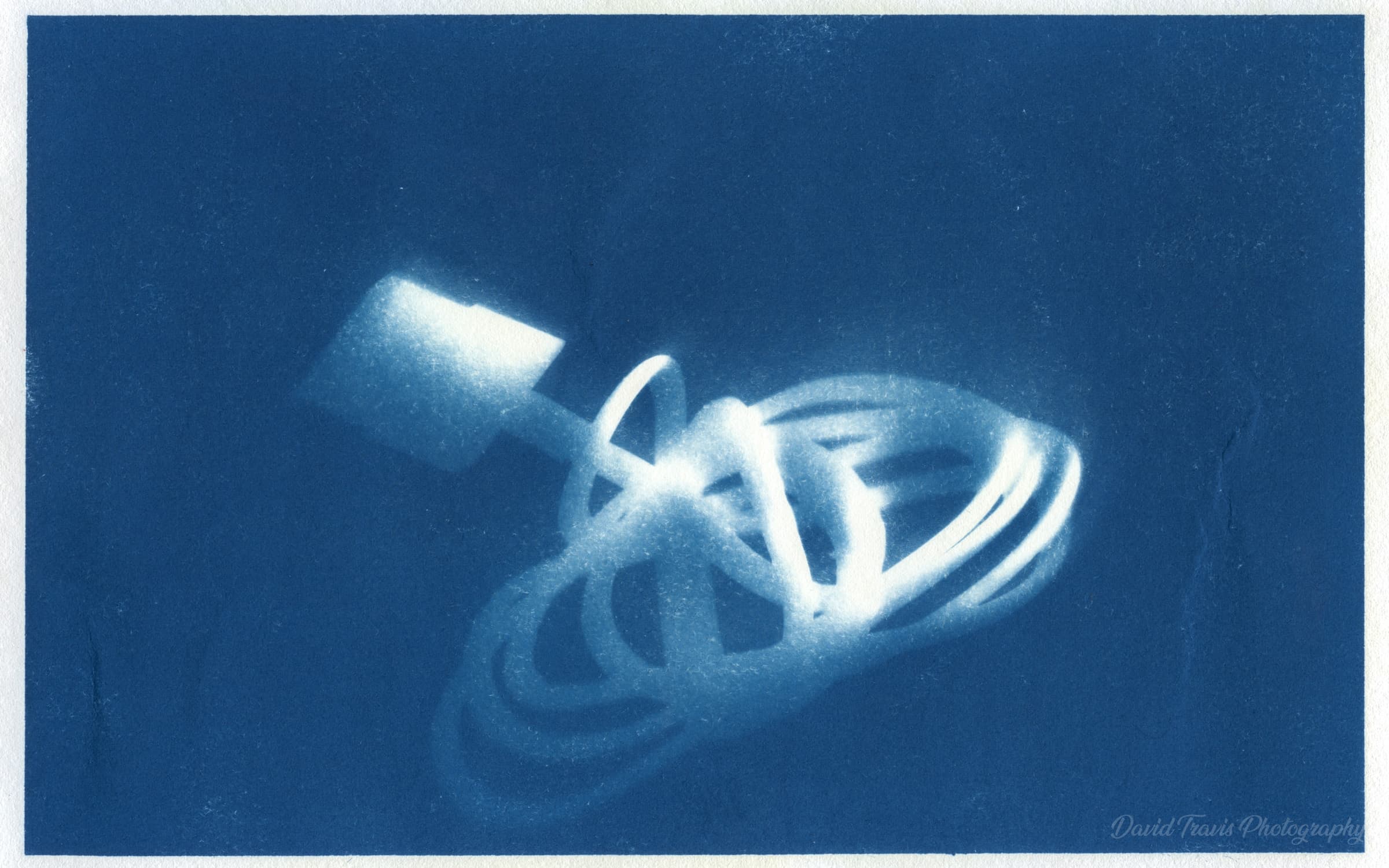
What I learned and what’s next
I like the visual intrigue in this collection of images and I’m pleased with the conceptual message: the photograms are a reminder of how quickly our technology becomes useless, and how permanently its waste stays with us. My next step is to use a different cyanotype recipe that creates images with a greater dynamic range (replacing ferric ammonium citrate with ferric ammonium oxalate) so I can get more detail in the shadows and highlights. Once I get a collection I’m fully pleased with, I plan to create a hand-made book containing the photograms. Stay tuned for more!
Cyanotypes drying
